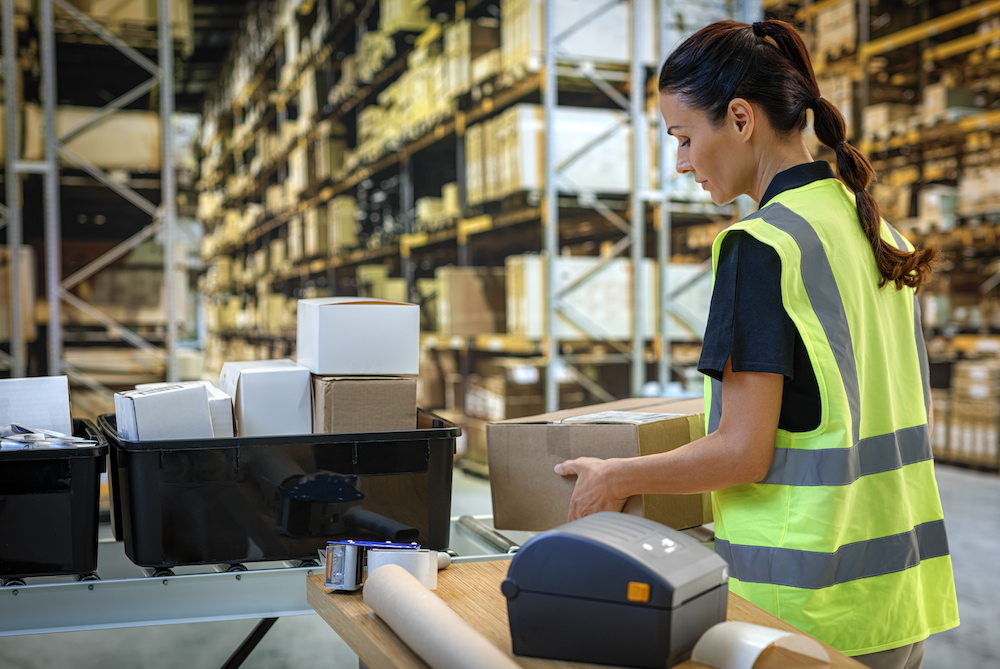The growth in e-commerce is affecting the way consumers shop online and in-store. It also affects what consumers expect from brick-and-mortar retailers that also have an online presence. Increasingly, shoppers are looking for a shopping experience that allows them to mix and match in-person and online capabilities when it comes to how they handle ordering, delivery, and returns.
That’s why there has been growth in the use of buy online, pickup in store (BOPIS) services as well as research online, buy in-store (ROBIS) consumer activities. As more consumers turn to BOPIS retail and ROBIS retail approaches to retailing, their expectations for customer service and instant gratification are increasing. For retailers, that means the supply chain needs to keep up with customer demand, delivering items and products ordered online to the the proper store location for on-time customer pick-up. It also means that stores need to more accurately manage inventories for these omnichannel scenarios.
Retailers must rethink their supply chains and streamline operations in order to meet these heightened fulfillment expectations.
Why does BOPIS Retail matter?
BOPIS retail makes it necessary to have an extremely accurate, birds-eye view of the inventory you have available in-store and in the warehouse. A mixed fulfillment environment can quickly lead to out-of-stocks and lost business if stores can’t handle the influx of online orders.
According to the Zebra study, “The Future of Fulfillment Vision Study,” survey respondents who think they have attained omnichannel fulfillment capability are in the minority.
Right now most retailers simply use store inventory to fill online orders, but as BOPIS continues to grow and expand, this will no longer be a feasible option. Retailers will need more advanced capabilities to rapidly deploy warehouse inventory to stores, and to shift inventories between store locations to successfully fulfill online orders.
Making BOPIS Retail Logistics More Attainable
Retailers will rely even more heavily on technology and automation to meet these rapidly evolving logistics requirements. That will mean an investment in critical BOPIS enabling technologies.
However, many retailers have a lot of work to do. According to the Zebra study, while most retailers use barcode scanners, many still use paper-based processes for logistics transactions. The Zebra study pointed to two areas where retailers expect to expand their current capabilities:
Mobile Computers: Almost all respondents in the Zebra survey said that they will use handheld mobile computers with barcode scanners to enable omnichannel logistics by 2020. If they aren’t already in place, retailers will need these mobile computers and scanners to manage warehouse, stock room, and shelf inventories.
More importantly, associates on the retail floor must be able to use these mobile devices to help shoppers locate items in the store, and order goods from the warehouse or another location. Associates will be able to provide an e-commerce-like experience in the store, helping customers order and pay for merchandise without having to go to a check-out station or desktop computer.
RFID: Respondents to the Zebra survey also said they expect adoption of radio-frequency identification (RFID) technology inventory management platforms to grow over the next several years. RFID technology will see greater adoption as retailers look for ways to increase the accuracy and velocity of their inventory data. With RFID tags, printers, and readers, retailers can gain much more granular and up-to-date views of where inventory is located at every leg of the supply chain.
With this technology in place, retailers can ensure that customers can see if the items they are ordering online are available for shipment or for in-store pick-up, and how quickly they can receive them. RFID helps ensure that the correct products in the right quantities are headed to the right fulfillment locations, and also give customers better in-stock information.
BOPIS saves both customers and retailers time and money that would otherwise be gobbled up through logistics processes – consumers don’t’ have to pay for shipping, and retailers can easily fulfill orders with locally placed inventory. In addition, customers picking up BOPIS orders often buy additional goods in the store, which creates an uptick in revenue for the retailer.
To remain competitive in this omnichannel environment, warehouses will require a thoughtful approach to how to execute BOPIS in the store (Where will orders be stored and picked up?) as well as a comprehensive approach to providing full inventory visibility to customers, store associates, and other stakeholders so that consumers can receive their orders quickly, no matter what channel they use.
To get started future-proofing your supply chain, contact the experts at Imprint Enterprises today.








